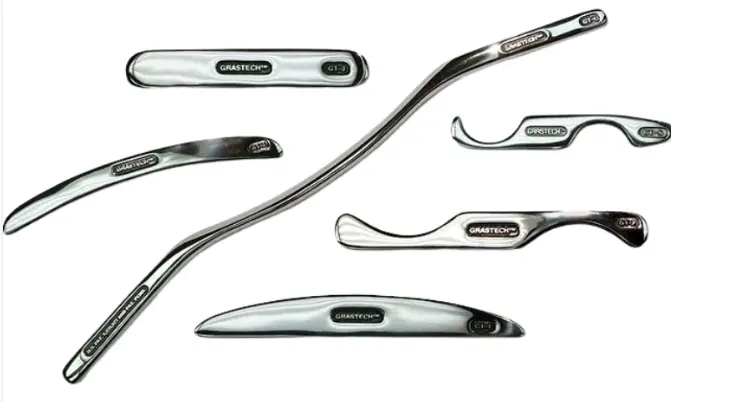
Revolutionizing Recovery: A Deep Dive into the Graston Technique® for Effective Muscle Injury Repair and Rehabilitation Strategies
The Graston Technique® can be a useful muscle injury repair tool when incorporated into a full treatment plan.
For centuries, the Chinese Gua sha technique has been used to promote healing by scraping muscle tissue to stimulate blood flow. In the early '90s, amateur athlete David Graston introduced a variation of this technique in the United States. Graston, who had a knee injury at the time, developed the unique tool and massage technique now referred to as the “Graston Technique®” to treat himself.
This technique has since been used to help thousands of athletes and weekend warriors recover from strained and pulled muscles, ligaments, and tendons. Patients with chronic pain and inflammation have also benefited.
How does the Graston Technique® work?
Muscles are comprised of different fibers, and as fibers become tight, they build up toxins. The Graston Technique® uses a stainless-steel instrument and a special massage method to identify areas of muscle adhesion, or scar-like tissue, that can be improved and creates assisted soft tissue mobilization.
A healthcare provider uses the instrument and massage in combination to stretch and relax the muscle tissues. This helps increase blood flow and restore movement patterns in injured tissues.
In the clinic, treatments begin by having patients warm up their soft tissues. They can perform this warm-up with a stationary bike, elliptical machine, or simple dynamic movements. Next, the tool is gently pushed across the injured area using big, broad strokes. The tool helps sense muscle vibrations and identify specific areas to work on.

Here are three reasons the treatment can fall short:
- No pain, no gain
- There will be some discomfort during treatment, but the instrument and massage should not cause intense pain. Some slight bruising may occur.
- However, if bruises appear often, the technique is being administered too intensely. The technique does not need to bruise or cause pain to be effective.
- Single treatment
- While patients will generally feel better after the first treatment, it typically takes three to four treatments before patients will sense lasting relief.
- The technique should be used within the course of a full treatment plan, including active stretching, strengthening, and dynamic exercise to maximize healing.
- At-home fix
- Self-treating with the wrong tools and without expert help can cause more harm than good. Patients do try to perform a Graston-like technique at home using butter knives or wrenches. Unfortunately, they often apply too much pressure or target the wrong areas, making the problem worse.
- To progress treatment at home, it is recommended to add additional exercises using safer tools such as a lacrosse ball or foam roller.
To learn more about The Graston Technique®, check out our video here.
Chris Gabriel, PT, OCS, CSCS (Board Certified Orthopedic Specialist), practices with the OrthoCarolina Sports Training Center. Chris and his team treat a range of patients for orthopedic and sports medicine needs. He enjoys working with various local high school, college, and professional sports teams.
Comments
June 14, 2022
June 14, 2022
February 21, 2022
February 25, 2022
Back




July 21, 2022